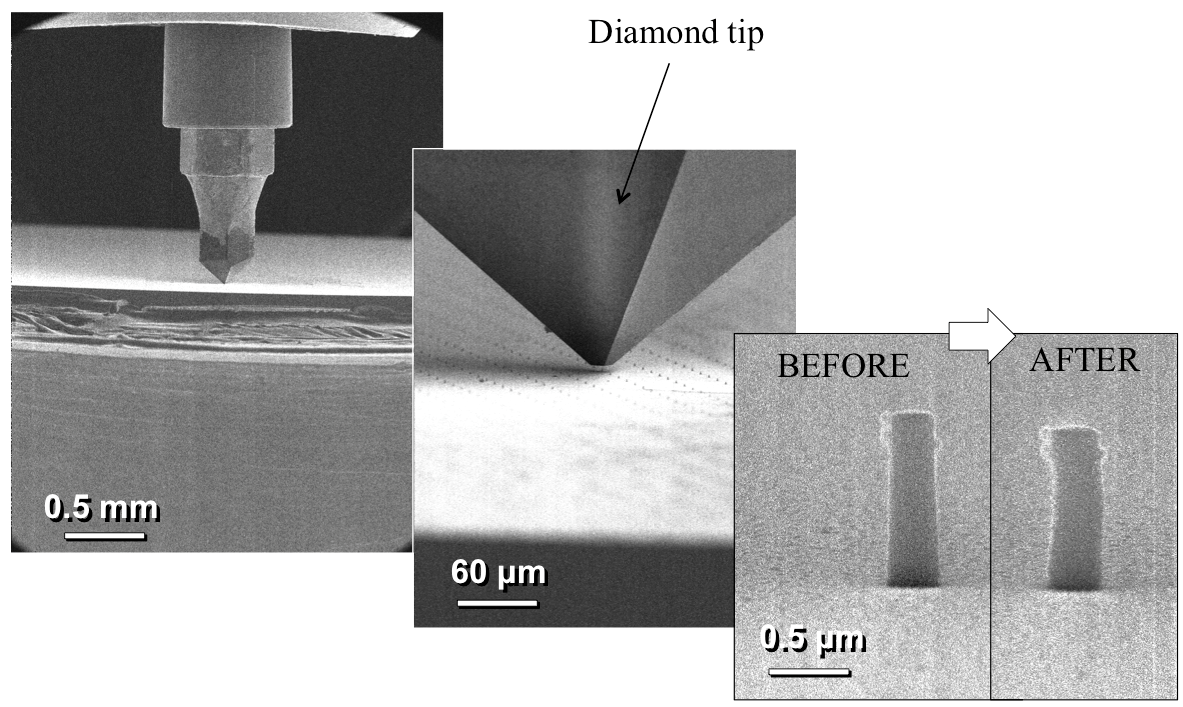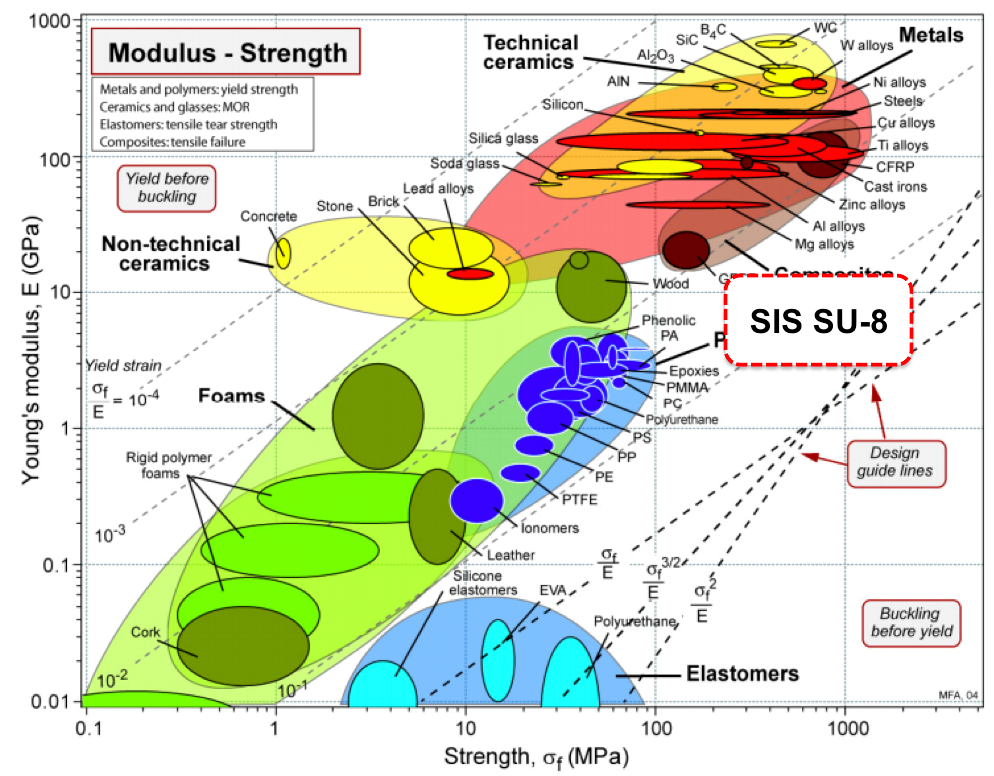(Current Sponsor: NSF – Mechanics of Materials and Structures)
Soft materials based on polymers are increasingly finding applications in electromechanical systems. By nature, polymers have vastly different atomic configurations from crystalline metallic materials, and there are different mechanisms to control their mechanical properties. Recently, new techniques have emerged, which can control the bulk mechanical properties of polymers by infiltrating inorganic metal oxides in polymer matrix [e.g., Science 324, 488 (2009)]. These new developments are based on atomic layer deposition (ALD) during which vapor-phase organometallic precursor and water molecules sequentially infiltrate polymer and form target metal oxides within the polymer matrix. Relatively in an early stage of development, many aspects of the process and synthesized organic-inorganic hybrid materials remain to be understood, and one of them is the fundamental nanoscale mechanical properties originating from the unique hybrid composite structure.
In this project, we investigate the mechanical properties of inorganic-infiltrated polymer nanostructures by combining our team’s unique experimental capability in the in-situ scanning electron microscopy (SEM)-based nanomechenical testing and the CFN (Center for Functional Nanomaterials at Brookhaven National Laboratory)’s expertise in nanofabrication of organic-inorganic hybrid nanostructures via electron beam lithography and ALD-based infiltration synthesis. First, we will develop nanomechanical testing platforms based on lithographically generated patterned polymer nanopillar structures with controlled dimension and geometry. ALD-based infiltration synthesis of metal oxides, such as Al2O3 and ZnO, will be applied to the polymer nanopillar templates, creating inorganic-infiltrated hybrid nanopillars.
Collaboration Efforts)
- Dr. Chang-Yong Nam at Center for Functional Materials at Brookhaven National Laboratory
- Dr. Ying Li at UConn Mechanical Engineering
< In-situ nanomechanical test on AlO3 infiltrated SU-8 nanopillars >
(done by Keith Dusoe)
< Sequential Infiltration Synthesis >
The patterned SU-8 nanopillars were subjected to the AlOx infiltration synthesis at 85 °C using a commercial ALD system (Cambridge Nanotech Savannah S100). TMA (Sigma-Aldrich) was infiltrated into the polymer template for 5 min (vapor pressure <100 Torr), followed by N2 purging of the ALD chamber for 5 min (100 sccm). Then water vapor was infiltrated into the polymer next for 5 min (pressure < 10 Torr), followed by N2 purging for 5 min, completing one synthesis cycle. A total of up to 16 cycles were applied.
< High Strength, but Low Young’s modulus : Ultra-high Elastic Energy Storage >
Modulus of resilience, the measure of materials’ ability to store and release elastic strain energy, is critical for realizing advanced mechanical actuation technologies in micro/nanoelectromechanical systems. In general, engineering the modulus of resilience is difficult because it requires asymmetrically increasing yield strength and Young’s modulus against their mutual scaling behavior. This task is even more challenging if it needs to be done at the nanometer scale. Here, we demonstrate orgainic-inorganic hybrid composite nanopillars with one of the highest R among high-strength engineering materials, by utilizing vapor-phase aluminum oxide infiltration in lithographically patterned negative photoresist SU-8. In-situ nanomechanical measurements reveal a metal-like high yield strength (~500 MPa) with an unusually low, foam-like Young’s modulus (~7 GPa), a unique pairing that yields ultra-high modulus of resilience reaching up to ~24 MJ/m3 as well as exceptional modulus of resilience per density of ~13.4 kJ/kg, surpassing those of most engineering materials. The hybrid polymer nanocomposite features lightweight, ultra-high tunable modulus of resilience, and versatile nano-scale lithographic patternability, with potential for nanomechanical components requiring ultra-high mechanical resilience and strength.
Related Publications
- Zhongyuan Li, Jinlong He, Nikhil Tiwale, Keith J. Dusoe, Chang-Yong Nam, Ying Li, Seok-Woo Lee, “Unraveling the ultrahigh modulus of resilience of sequential-infiltrated core-shell polymer nanocomposite nanopillars,” Materials & Design, 227, 111770 (2023) [PDF][web]
- Keith J. Dusoe, Xinyi Ye, Kim Kisslinger, Aaron Stein, Chang-Young Nam, Seok-Woo Lee, “Ultra-high elastic energy storage in metal-oxide-infiltrated hybrid polymer nanocomposite,” Nano Letters 17, 7416–7423 (2017) [PDF][web]



